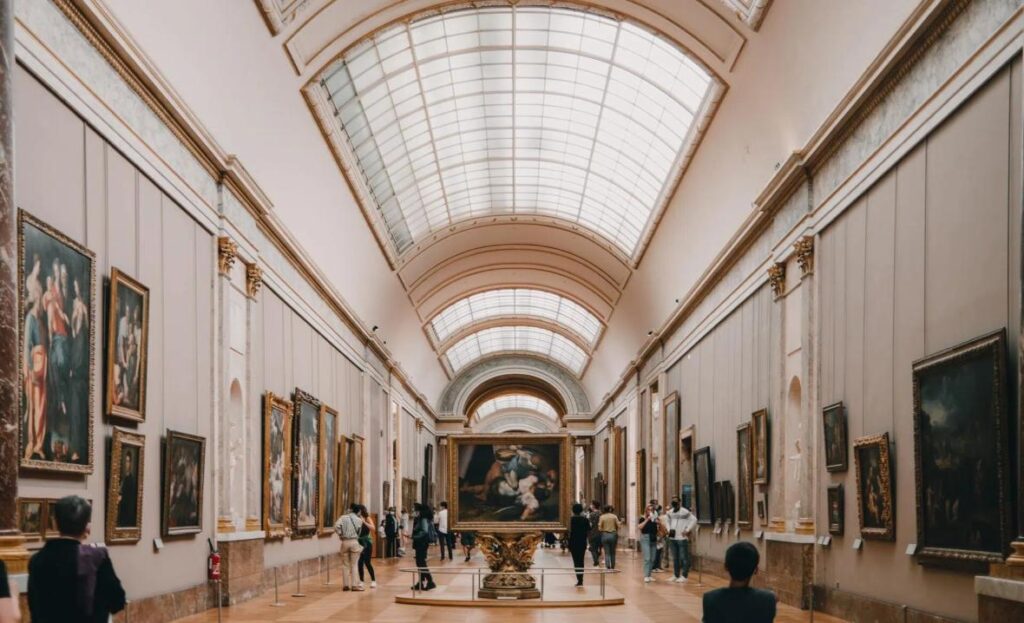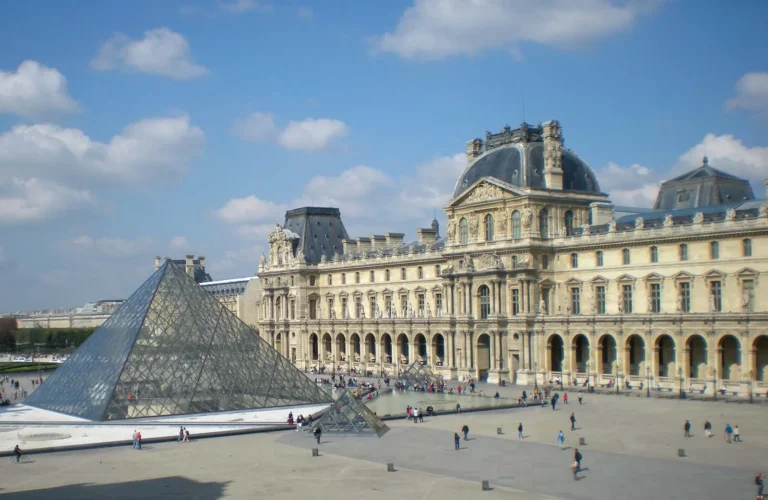
The Louvre Museum (Musée du Louvre) is one of the most famous and largest museums in the world, located in the heart of Paris, France. This historic museum houses an unparalleled collection of artistic and cultural artifacts, spanning from ancient times to the modern era. One of the most iconic and controversial modern additions to this museum is the Louvre Glass Pyramid, which serves as the main entrance. Completed in 1989, this pyramid is a stunning blend of classical and modern architecture, making it one of the most recognizable structures in the world.
۱. اطلاعات کلی
– Name: Louvre Museum (Musée du Louvre)
– Location: Paris, France
– Architect of the Glass Pyramid: I. M. Pei
– Year of Completion (Pyramid): 1989
– Height of the Pyramid: 21.6 meters
– Number of Glass Panels: 673
– Function: Main entrance to the Louvre Museum
2. History of the Louvre Museum
The Louvre was originally a medieval fortress, built in the 12th century. In the 16th century, it was transformed into a royal palace, gradually accumulating a vast collection of artworks.
In 1793, following the French Revolution, the Louvre was converted into the national museum of France, opening its doors to the public. Today, the museum houses over 38,000 artifacts and attracts millions of visitors annually.
3. The Louvre Glass Pyramid – A Fusion of Classical and Modern Architecture
By the 1980s, the increasing number of visitors required a new and modern entrance. Chinese-American architect I. M. Pei proposed the design of a glass pyramid, which faced significant opposition. Critics argued that such a modern structure would not blend well with the classical architecture of the Louvre.
However, upon completion, the Glass Pyramid became one of the most iconic landmarks of Paris, now recognized as an architectural masterpiece.
4. Architectural Features of the Glass Pyramid
– Structure: Made of 673 glass panels, allowing natural light to illuminate the interior.
– Dimensions: A square base measuring 35.4 meters per side and a height of 21.6 meters.
– Structural Stability: Constructed using steel and lightweight aluminum, providing both strength and minimal weight.
– Lighting Design: At night, the pyramid is illuminated beautifully, creating a mesmerizing effect in the Louvre courtyard.
5. Cultural and Touristic Significance
– Increase in Visitors: The construction of the pyramid significantly boosted the museum’s attendance.
– Symbol of Modern Architecture: It is a prime example of how modern and historical architecture can be successfully integrated.
– Inspiration for Architects: The design of the pyramid has influenced numerous architectural projects worldwide.
6. Famous Artworks in the Louvre Museum
The Louvre houses a vast collection of masterpieces, including:
– Mona Lisa – Leonardo da Vinci
– Venus de Milo – Ancient Greek Sculpture
– Code of Hammurabi – One of the oldest legal texts in history
– The Coronation of Napoleon – Jacques-Louis David
Conclusion
The Louvre Museum and its Glass Pyramid stand as a symbol of the fusion between tradition and innovation. While initially controversial, the pyramid has become an integral part of the Louvre’s identity and an architectural landmark admired by millions. It showcases how modern design can enhance and coexist with historical heritage.
This successful integration of the past and present has set a precedent for future architectural projects worldwide. The Louvre Pyramid is more than just an entrance—it is a statement of artistic vision, engineering excellence, and cultural harmony.


No comments yet.